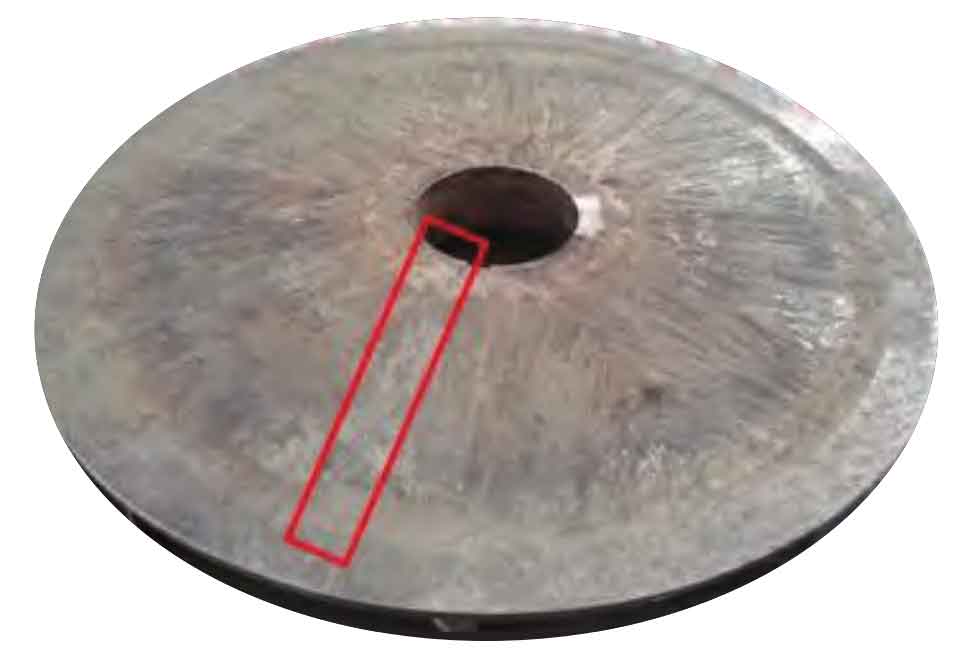The material grade of titanium alloy fan impeller produced by a factory is ZTC4, with a diameter of 1.3m. It is an interference fit with the shaft assembly. During operation, the speed is 2867r/min, and the speed regulation is 1000~2900r/min. The medium is converter gas from the steel plant, the main components are Fe2O3 and FeO, and the inlet air temperature is 65 ℃. During the use of the impeller, a 30cm long crack casting defect was produced, and the morphology is shown in Figure. The causes of crack casting defects of the impeller will be analyzed from the aspects of chemical composition, macro morphology, fracture morphology and metallographic structure, in order to find out the main causes and provide direction for subsequent improvement in combination with the production process.

1) The content of each chemical element in the impeller meets the standard requirements, and the chemical composition is qualified.
2) Macroscopic analysis shows that the keyway is processed into a right angle by wire cutting, and the casting defect of crack originates from the stress concentration at the right angle of the keyway, and the fracture near the crack source area is relatively flat. The assembly of the impeller and the shaft is interference fit, and there is a large assembly stress. According to the report of the entrusting party, the key of the impeller fit has a certain degree of corrosion, so that the key and keyway fit is not in full section contact, which will change the stress distribution of the impeller keyway and increase the stress concentration at the root of the impeller keyway.
3) The micro analysis shows that there are defects in the key groove of the impeller, and the repair welding has been carried out during the processing, but no heat treatment has been carried out after the repair welding in the actual production process. Metallographic analysis shows that there are oxides at the cracks in the repair welding area, but no oxides are found in the matrix fracture area. Therefore, there are welding hot crack sources in the repair welding area. In addition, no timely heat treatment is carried out to eliminate the stress, which further increases the cracking trend of the impeller under the working condition due to the alternating working stress, and the crack casting defects gradually expand with the use of time.
To sum up, the main reason for the crack casting defects of the impeller is that when the impeller casting defects are treated, the repair welding is not in place, leading to the formation of the crack source. In addition, the welding stress is not eliminated by timely heat treatment after the repair welding. Due to the influence of welding stress in the working process of the impeller, stress concentration occurs at the right angle of the keyway just in the repair welding area, leading to crack source expansion and crack casting defects.
